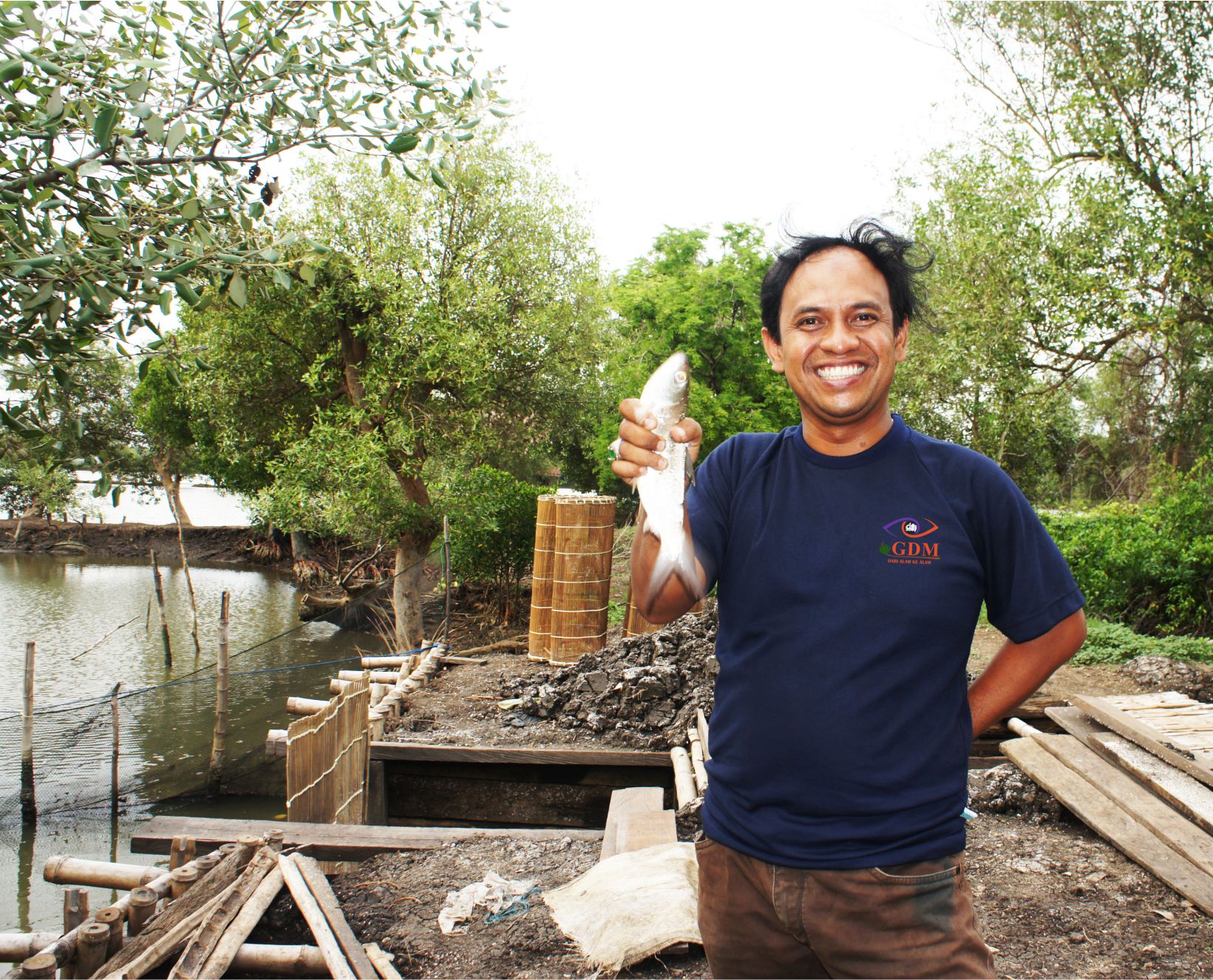Mechanism of Mud Odor in Milkfish and its Solution
Ever enjoyed the delicious Milkfish? Are you the one of the fish lovers? But, have you ever feel the fish have a mud smell? Here is the mechanism of how mud smell in Milkfish exist and how to overcome it. Why? Of course the typical and delicious milkfish dish is not delicious anymore. By using organic nutrient GDM, can overcome the mud smell in milkfish.
The Milkfish is an herbivorous fish with phytoplankton as its main food. Nowadays, aquaculture variety presented for the fish food are mostly using inorganic fertilizers. It can be urea and SP-36 which mainly purposed to grow phytoplankton.
Unfortunately, to improve the fertility of fish, farmers usually use excessive inorganic fertilizers. The reason is to increase the amount of milkfish production without thinking about the effect of the mud smell in milkfish.
The main ingredients of inorganic fertilizers is the elements of nitrogen and phosphate. They are needed in large quantities in the waters for the growth of phytoplankton. Therefore, it is necessary for farmer to supply those substance from the outside sources.
Excessive supply of urea and TSP fertilizers in the cultivation environment will make the water conditions to be more fertile for the fish.
The lush waters are characterized by a massive number and types of phytoplankton live inside, for example Cyanophyceae. The following phytoplankton species are the most favored groups of milkfish namely Chlorella sp., Closteriopsis sp., Oscillatoria sp., Mastogloia sp., Rhizosolenia sp., Peridinium sp., And Prorocentrum sp.
Unfortunately, the overproduction of phytoplankton caused by frequent fertilizer application makes phytoplankton in waters and soil will be so many. The diversity and abundance of phytoplankton in pond waters is influenced by the nutrient in the water.
Nutrients for the growth of phytoplankton are nitrogen, phosphorus and organic material.
Actually, these nutrients can be obtained from the waste of the fish food, stool, and silt deposits in fish ponds.
If the ratio of N (nitrogen) and P (phosphorus) in a balanced, the pond will produce various kinds of phytoplankton such as Chorophyceae, Rhodophyceae, Cyanophyceae and Diatomae. However, if the ratio of N and P is imbalance, there will be a phytoplankton domination inside milkfish ponds.
If Cyanophyceae is already dominant in the pond environment, it causes mud smell.
The smell of milkfish is caused by geosmin components and 2 methylisoborneols (MIB) of the Oscillatoria sp phytoplankton, Anabaena sp, Actinomyces and Streptomyces tent bacteria.
These compounds can enter the fish body since milkfish are herbivores that eat phytoplankton. It will then accumulates them on the skin surface, stomach, intestines and even inside its flesh. Even milkfish that have undergone a heating process still contains the compound.
Therefore, it needs a balanced N: P ratio to grow a wide variety of plankton in milkfish ponds so as to minimize the smell of mud.
The GDM Liquid Organic Supplement contains the essential macro and micro elements needed for the growth of phytoplankton.
SOC GDM also contains 5 species of bacteria that are able to decompose organic materials in the pond so that it can be directly utilized phytoplankton for its growth.
Phytoplankton that grow will also be diverse so that will not cause the smell of mud on milkfish.
Pseudomonas alcaligenes bacteria in SOC GDM have the ability to produce lipase and dexametanose enzymes that break down organic compounds into simpler ones.
The phytoplankton that grow are Chlorophyceae, Rhodophyceae, Cyanophyceae, Phaeophyceae and Diatomae. Milkfish will have more choice of food with a balanced amount so that the smell of mud can be prevented.
GDM liquid organic supplements can also be applied during the preparation process of the pond that is after the fertilization process with a dose of 10 liters / ha. The productivity of phytoplankton in fertilized ponds will result in higher phytoplankton production than unfertilized ponds.
Interestingly, the water quality parameters such as temperature, brightness, DO, pH, salinity, N-total, P-total, and N: P ratio does not cause mud smell, but have a direct effect on growth of phytoplankton producing MIB or geosmin .
Based on the research by Aziz et al (2015), the temperature of aquaculture waters affect the physics, chemistry, and biology. Temperature is also very instrumental in controlling the condition of aquatic ecosystems.
Phytoplankton type Chlorophyta and Diatom phytoplankton will grow well in the temperature range of 30-35 ° C and 20-30 º C. Cyanophyta phyla is more tolerant to a higher temperature range compared to Chlorophyta and Diatomae.
Sumber : Aziz, R., Nirmala, K., Affandi, R., dan Triheru, P. 2015. Kelimpahan Plankton Penyebab Bau Lumpur pada Budidaya Ikan Bandeng Menggunakan Pupuk N : P berbeda. Jurnal. Akuakultur Indonesia 14 (1) : 58-68.



